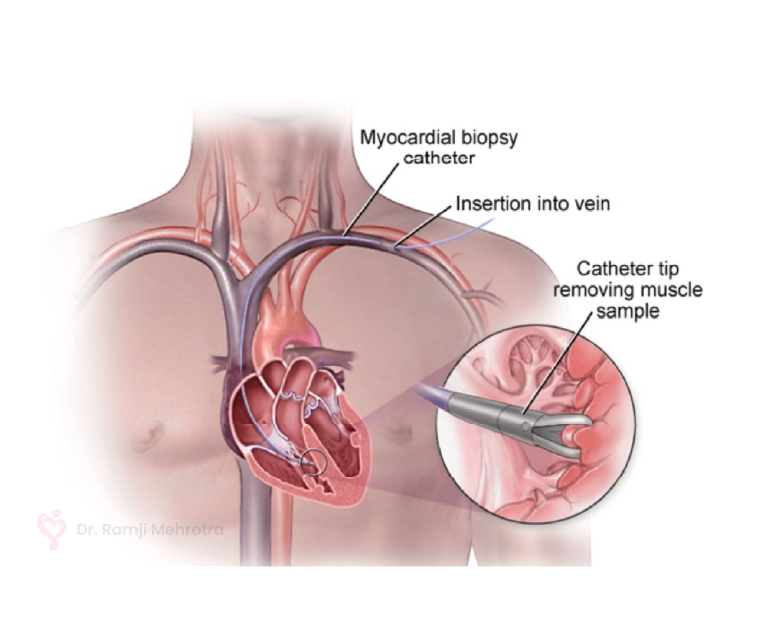Heart biopsy, also referred to as endomyocardial biopsy, is a medical procedure performed to obtain a small sample of heart tissue for analysis. The sample is usually taken from the inner lining of the heart, known as the endocardium. The primary goal of a heart biopsy is to gather information about the heart’s structure, function, and potential abnormalities that may be causing cardiac symptoms.
Indications for Heart BiopsyHeart biopsies are most commonly performed in cases where there is suspicion of heart muscle diseases, such as myocarditis, cardiomyopathy, or rejection after a heart transplant. Myocarditis is the inflammation of the heart muscle, while cardiomyopathy refers to diseases that affect the heart’s ability to pump blood effectively. After a heart transplant, biopsies are often done to monitor for signs of rejection, which is the body’s immune system attacking the transplanted heart tissue.

A heart biopsy is usually performed in a specialized cardiac catheterization lab. The patient is given a local anesthetic to numb the area where the catheter (a thin, flexible tube) will be inserted. The catheter is then carefully threaded through a blood vessel, usually in the neck or groin, and guided to the heart. With the assistance of imaging techniques like fluoroscopy, the doctor navigates the catheter to the desired location within the heart’s chambers.
Once the catheter is in place, a small forceps-like instrument is extended through the catheter to grasp a tiny piece of heart tissue. This tissue sample is then gently pulled back into the catheter and removed. The catheter is then carefully withdrawn, and pressure is applied to the insertion site to minimize bleeding. The entire procedure is completed in around one hour.
Analysis and DiagnosisThe heart tissue sample is sent to a laboratory, where it undergoes a series of tests. Pathologists examine the tissue under a microscope to look for signs of inflammation, scarring, or other abnormalities. These findings provide crucial insights into the underlying causes of cardiac symptoms and help in guiding treatment decisions.
In cases of heart transplant recipients, biopsies are performed regularly following the transplant to monitor for signs of rejection. Rejection occurs when the recipient’s immune system identifies the transplanted heart tissue as foreign and launches an attack. Detecting rejection early allows doctors to adjust the patient’s immunosuppressive medications and prevent further damage to the transplanted heart.
BenefitsHeart biopsies provide direct access to heart tissue, which is not possible through non-invasive imaging techniques alone. This enables more accurate diagnosis and helps doctors in adopting treatment plans suited to the individual patient’s needs.
ConclusionHeart biopsies play a critical role in helping to understand complex cardiac conditions. By providing detailed information about the heart’s structure and function, these procedures help in accurate diagnosis and treatment strategies.
